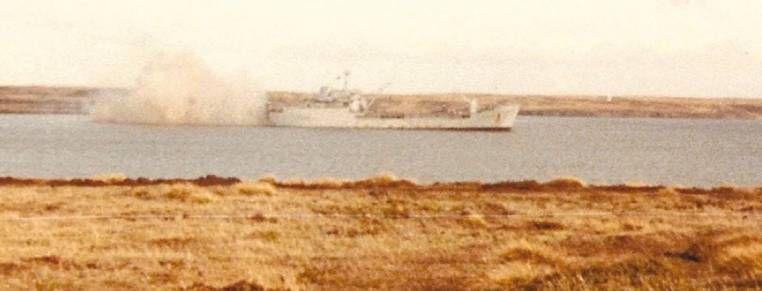THE GUNS OF EAST FALKLAND INTERVIEW WITH MAJOR TOM MARTIN (RETD.)


The Falklands War is known for the varied British units that fought to recapture the South Atlantic islands. RAF aircraft clashed with Argentine jets, Royal Navy ships bore the brunt of enemy air attacks, while infantrymen ‘yomped’ across the rugged landscape to engage Argentine defenders. However, there is one aspect of the campaign that has received little attention – the artillery.
Five batteries of the Royal Artillery fought in the Falklands and Major General Julian Thompson (commander of 3 Commando Brigade) has since noted, “Without the gunners we would not have won – however bravely and skilfully the other soldiers fought. Only devastatingly accurate and powerful fire missions enabled the infantry to overcome well-sited Argentine soldiers among rocks and crags on the formidable objectives.”
One of these artillerymen was Second Lieutenant Tom Martin of 29 (Corunna) Field Battery, RA. Martin and his colleagues had sailed south with 2nd Battalion, Parachute Regiment (2 Para) and would support them throughout the land campaign. Nevertheless, 29 Battery would ultimately provide heavy fire cover for any unit that requested it and their guns participated in the majority of the engagements during the campaign.


A “shock” deployment
Martin joined the British Army in 1979 and was commissioned into the artillery the following year. Becoming a gunnery officer was not his original plan, “I came from a family of veterinary surgeons that spanned 100 years. I was the fourth generation and was expecting to go into veterinary science but I performed abysmally in my school exams and didn’t make the grade. I then looked for something that gave me a professional status but without a professional qualification. I hit upon an idea of being a pilot and pursued that with the intention of joining the Army Air Corps.”

At that time the AAC did not directly recruit officers so after completing his training at Sandhurst, Martin entered the artillery because it provided the most number of pilots for the Air Corps. Upon completing his training Martin joined 29 (Corunna) Field Battery, 4th Field Regiment as a second lieutenant.
After a spell serving in Northern Ireland, 29 Battery had returned to their base at Aldershot when news broke of the Argentine invasion of the Falkland Islands, “It was a shock and for the vast majority of people nobody even knew where the Falklands were. Back in the day there was no internet and what you saw was on the news, radio or in the papers. We were very much glued to TV screens when it happened.”
Martin recalls that although the British response was swift, he didn’t think
You’re reading a preview, subscribe to read more.
Start your free 30 days





